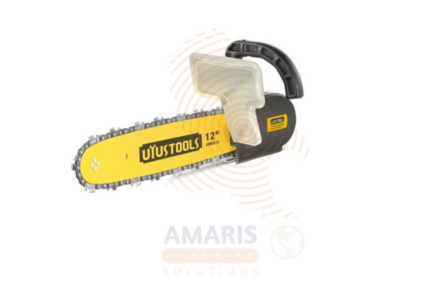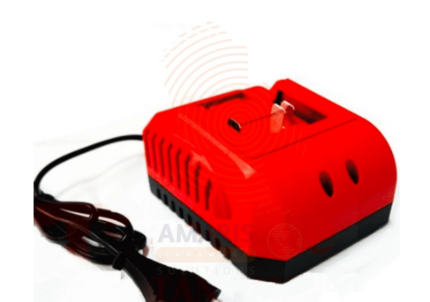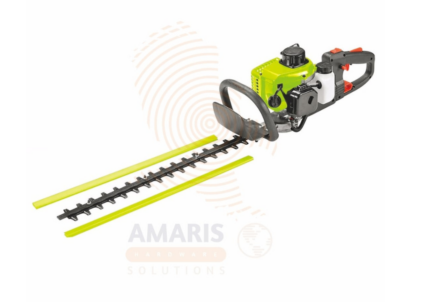
Welding Locking Pliers
$18.85 Original price was: $18.85.$17.91Current price is: $17.91.
Wool Bonnet
$13.81 Original price was: $13.81.$13.12Current price is: $13.12.
WhatsApp Order
A wool bonnet typically refers to a soft, close-fitting head covering made from wool fabric. It is often designed to cover the head and ears, providing warmth and comfort in cooler weather. Wool bonnets can come in various styles, including beanies, berets, or other hat designs made primarily from wool or wool-blend materials. The term “wool bonnet” may have different interpretations depending on the context, so the specific design and characteristics can vary.
Description
Table of Contents
ToggleWool Bonnet
Uses
-
Warmth and Insulation:
-
Wool is known for its natural insulating properties. A wool bonnet helps keep the head and ears warm in cold weather by trapping heat close to the body.
-
-
Cold Weather Protection:
-
Wool bonnets provide protection against harsh weather conditions, including cold winds and low temperatures, making them suitable for winter or chilly environments.
-
-
Fashion and Style:
-
Wool bonnets come in various styles, colors, and designs, making them a popular fashion accessory. They can complement an outfit and add a touch of style to both casual and more formal ensembles.
-
-
Outdoor Activities:
-
People often wear wool bonnets during outdoor activities such as hiking, camping, or skiing to stay warm and comfortable in colder climates.
-
-
Sports and Athletics:
-
Wool bonnets are commonly worn during outdoor sports and athletic activities to provide warmth without hindering movement. They are popular among runners, cyclists, and other outdoor enthusiasts.
-
-
Uniforms and Workwear:
-
In certain professions or uniforms, a wool bonnet may be part of the attire for practical reasons, especially in occupations where staying warm is essential.
-
-
Cultural and Traditional Attire:
-
In some cultures, wool bonnets may be a traditional or cultural garment worn as part of specific clothing ensembles.
-
-
Hair Protection:
-
Wool bonnets can be used to protect the hair from the elements, such as wind and rain, helping to maintain hairstyles and prevent frizz.
-
-
Gifts and Souvenirs:
-
Wool bonnets are often purchased as gifts or souvenirs, especially in regions known for their wool production. They make for practical and stylish gifts.
-
-
DIY and Crafting:
-
Wool bonnets can be used as a base for DIY projects or crafting, allowing individuals to customize and embellish them according to their preferences.
-
SAFETY HANDLING PRECAUTIONS
Safety Precautions
-
Allergies:
-
Be mindful of potential wool allergies. Some individuals may be allergic to wool fibers. If you have a known wool allergy, choose alternative materials for headwear.
-
-
Cleaning and Care:
-
Follow care instructions provided by the manufacturer to maintain the bonnet's quality. Improper cleaning methods may damage the wool or alter its properties.
-
-
Proper Fit:
-
Ensure that the wool bonnet fits snugly but not too tight. A well-fitted bonnet will provide warmth without causing discomfort or restricting blood circulation.
-
-
Fire Safety:
-
Keep the wool bonnet away from open flames or sources of intense heat, as wool is flammable. Avoid wearing it near fireplaces, stoves, or other potentially hazardous environments.
-
-
Ventilation:
-
Use the wool bonnet in well-ventilated areas. While wool is breathable, prolonged use in hot and humid conditions may lead to discomfort. Take breaks if needed.
-
-
Cleanliness:
-
Maintain cleanliness, especially if using the bonnet during physical activities. Regular washing prevents the accumulation of sweat, oils, and dirt, which can impact both the bonnet's condition and hygiene.
-
-
Weather Appropriateness:
-
Choose the right type of wool bonnet for the weather conditions. In extremely cold conditions, ensure that the bonnet provides adequate insulation, while in warmer weather, opt for lighter and breathable alternatives.
-
-
Avoid Tight Tying:
-
Avoid tying the bonnet too tightly, as this can lead to discomfort and may affect blood circulation. Adjust it to a comfortable and secure fit without undue pressure on the head.
-
-
Check for Damages:
-
Regularly inspect the wool bonnet for any signs of damage, such as holes, loose threads, or worn areas. Damaged bonnets may not provide adequate warmth and could pose safety risks.
-
-
Avoid Sharp Objects:
-
Be cautious when wearing the bonnet around sharp objects to prevent snagging or tearing. Avoid contact with rough surfaces that could damage the wool fibers.
-
-
Personal Comfort:
-
If you feel any discomfort, itching, or irritation, remove the bonnet and check for any signs of allergic reactions or sensitivity. Consult a healthcare professional if needed.
-
Related products
Cement Blender
A cement blender is a mechanical device designed for the purpose of mixing and blending various components of cementitious materials, such as cement, sand, and water, to create a homogenous mixture. This blended mixture is commonly used in construction and building projects, particularly for applications like concrete production. The blender typically features a rotating drum or container that facilitates the thorough mixing of the ingredients, ensuring a consistent and uniform composition for the construction materials.
Cement Blender – SDS Plus
A Cement Blender - SDS Plus mechanism typically refers to a power tool designed for mixing cement, mortar, or other construction materials. The term "SDS-PLUS" refers to a specific chuck and bit system commonly used in rotary hammers and drills. SDS-PLUS chucks allow for quick and secure attachment of drill bits and other accessories.
In the context of a cement blender with SDS-PLUS, it likely means that the tool has a specialized chuck system for easy attachment of mixing paddles or blades used in blending cement or similar materials. The SDS-PLUS system is known for its quick-change capability, enhancing efficiency and convenience when working with different attachments. The blender's design may include features to ensure effective mixing of construction materials, making it suitable for tasks like preparing mortar or concrete on construction sites.
Chain Saw Adapter for Angle Grinder
Chain Saw Adapter for Angle Grinder typically refer to components that allow you to attach or use certain accessories with your chainsaw or grinder.
- Chainsaw Adapter:
- A device that enables the use of a 12-inch chainsaw blade on a chainsaw designed for a different blade size. This adapter allows you to customize or replace the original chainsaw blade with a 12-inch one, potentially for different cutting applications.
- Grinder Adapter:
- An accessory that allows you to attach a grinder to a 12-inch chainsaw, converting it into a chainsaw chain sharpener. This adapter facilitates the grinding or sharpening of the chainsaw chain, ensuring optimal cutting performance.
Cordless Blower
A cordless blower is a handheld or backpack device designed for the purpose of moving air to clean or clear debris, leaves, or other materials from outdoor spaces. Unlike traditional blowers that are powered by an electrical cord, cordless blowers are equipped with rechargeable batteries, providing greater mobility and flexibility in use. These devices are commonly used in landscaping, gardening, and yard maintenance to efficiently and conveniently blow away leaves, grass clippings, and other lightweight debris without the limitations of a power cord.
Countersink Drill Set
A countersink drill set typically refers to a collection of six tools designed for countersinking operations in woodworking or metalworking. Each set usually includes six individual countersink drills with varying sizes or angles. Countersinking is a process that involves creating a conical hole in a material, allowing the head of a screw or bolt to sit flush with or below the surface. These drill sets are essential for achieving a professional finish in various applications where a smooth and even surface is desired, such as in carpentry, metal fabrication, or DIY projects.
Fast Charger
A fast charger is a device designed to quickly recharge compatible batteries with a voltage rating of 20 volts. The "fast" designation implies that the charger is engineered to deliver a higher charging current, allowing for a more rapid replenishment of the battery's energy capacity compared to standard chargers. This type of charger is commonly used for power tools, electronic devices, or other equipment that operates on 20V batteries, providing users with a more efficient and time-saving charging solution.
Gasoline Hedge Trimmer
A gasoline hedge trimmer is a handheld gardening tool powered by a gasoline engine, designed for trimming and shaping hedges, bushes, and shrubs. It consists of a cutting blade or blades, typically reciprocating, attached to a long shaft with a handle or grip for ease of use. The gasoline engine provides the necessary power to drive the blades, offering mobility and independence from electrical outlets, making it suitable for use in outdoor settings where access to electricity may be limited. Gasoline hedge trimmers are valued for their versatility, allowing users to manicure and maintain landscaping with efficiency and precision.
Glue Gun
A glue gun, specifically a 40-watt glue gun, is a handheld tool designed for dispensing hot melt adhesive in a controlled and precise manner. It typically consists of a heating element powered by a 40-watt electrical system, a trigger mechanism to control the adhesive flow, and a nozzle for directing the melted glue. The glue stick, usually made of thermoplastic materials, is inserted into the gun, melted by the heating element, and then extruded through the nozzle as a liquid adhesive. This versatile tool is commonly used in various DIY projects, crafts, and home repairs due to its quick and efficient bonding capabilities. The 40-watt power rating indicates the electrical power consumed by the glue gun to heat the adhesive to its melting point.


 Acrylic Sealants
Acrylic Sealants Construction Adhesives
Construction Adhesives Double-Sided Tape
Double-Sided Tape Duct Tape
Duct Tape Electrical Tape
Electrical Tape Epoxy & Resins
Epoxy & Resins Masking Tape
Masking Tape
 Automotive Wrenches & Socket Sets
Automotive Wrenches & Socket Sets Battery Chargers & Jump Starters
Battery Chargers & Jump Starters Car Jacks & Stands
Car Jacks & Stands Car Wash & Detailing Products
Car Wash & Detailing Products Diagnostic Tools
Diagnostic Tools Tire Inflators
Tire Inflators Vehicle Lighting
Vehicle Lighting Oil & Lubricants
Oil & Lubricants
 Adhesives & Sealants
Adhesives & Sealants Bricks & Blocks
Bricks & Blocks Cement & Concrete
Cement & Concrete Drywall & Plaster
Drywall & Plaster Flooring (Tiles, Wood, Laminate)
Flooring (Tiles, Wood, Laminate) Lumber & Plywood
Lumber & Plywood Paints, Primers & Coatings
Paints, Primers & Coatings Insulation Materials
Insulation Materials Roofing Materials
Roofing Materials
 Circuit Breakers
Circuit Breakers Electrical Cables & Wires
Electrical Cables & Wires Switches & Sockets
Switches & Sockets Fuses & Relays
Fuses & Relays Connectors & Terminals
Connectors & Terminals Electrical Boxes & Panels
Electrical Boxes & Panels Conduit & Fittings
Conduit & Fittings Lighting Fixtures & Bulbs
Lighting Fixtures & Bulbs Extension Cords & Power Strips
Extension Cords & Power Strips
 Anchors
Anchors Bolts
Bolts Clips & Clamps
Clips & Clamps Screws
Screws Nuts
Nuts Washers
Washers Rivets
Rivets Nails
Nails Threaded Rods
Threaded Rods
 Hammers
Hammers Measuring Tools (Tapes, Levels, Calipers)
Measuring Tools (Tapes, Levels, Calipers) Screwdrivers
Screwdrivers Pliers & Cutters
Pliers & Cutters Saws & Blades
Saws & Blades Chisels & Punches
Chisels & Punches Allen Keys & Hex Keys
Allen Keys & Hex Keys Ratchets & Socket Sets
Ratchets & Socket Sets Wrenches & Spanners
Wrenches & Spanners
 Power Tool Accessories (Blades, Bits, Discs)
Power Tool Accessories (Blades, Bits, Discs) Rotary Tools
Rotary Tools Saws (Circular, Jigsaw, Reciprocating)
Saws (Circular, Jigsaw, Reciprocating) Drills & Drivers
Drills & Drivers Grinders & Sanders
Grinders & Sanders Heat Guns
Heat Guns Nail Guns
Nail Guns Impact Wrenches
Impact Wrenches Batteries & Chargers
Batteries & Chargers
 Pipes & Fittings (PVC, Copper, PEX)
Pipes & Fittings (PVC, Copper, PEX) Plumbing Tools
Plumbing Tools Pumps & Motors
Pumps & Motors Sealants & Adhesives for Plumbing
Sealants & Adhesives for Plumbing Valves & Taps
Valves & Taps Water Heaters
Water Heaters Drainage Systems
Drainage Systems Faucets & Fixtures
Faucets & Fixtures Hoses & Tubing
Hoses & Tubing
 Hinges & Latches
Hinges & Latches Hooks & Brackets
Hooks & Brackets Window Hardware
Window Hardware Chains & Cables
Chains & Cables Casters & Wheels
Casters & Wheels Shelving & Storage Systems
Shelving & Storage Systems Door Handles & Locks
Door Handles & Locks Drawer Slides & Cabinet Hardware
Drawer Slides & Cabinet Hardware
 Personal Protective Equipment (PPE)
Personal Protective Equipment (PPE) Respirators & Masks
Respirators & Masks Safety Glasses
Safety Glasses Safes
Safes Security Cameras
Security Cameras Gloves
Gloves Helmets
Helmets Ear Protection
Ear Protection Fire Safety Equipment
Fire Safety Equipment Locks & Padlocks
Locks & Padlocks Motion Sensors & Alarms
Motion Sensors & Alarms
 Garden Fencing
Garden Fencing Garden Furniture Hardware
Garden Furniture Hardware Lawn Mowers
Lawn Mowers Trimmers & Edgers
Trimmers & Edgers Shovels & Spades
Shovels & Spades Rakes & Hoes
Rakes & Hoes Pruning Shears & Loppers
Pruning Shears & Loppers Watering Systems (Hoses, Sprinklers, Nozzles)
Watering Systems (Hoses, Sprinklers, Nozzles)
 Interior Paints
Interior Paints Paint Brushes & Rollers
Paint Brushes & Rollers Paint Strippers & Thinners
Paint Strippers & Thinners Paint Trays & Accessories
Paint Trays & Accessories Exterior Paints
Exterior Paints Spray Paints
Spray Paints Primers & Undercoats
Primers & Undercoats Varnishes & Stains
Varnishes & Stains
 Gaskets & Seals
Gaskets & Seals Hydraulic Fittings
Hydraulic Fittings Industrial Fasteners
Industrial Fasteners Industrial Hoses
Industrial Hoses Lubricants & Greases
Lubricants & Greases Metal Sheets & Bars
Metal Sheets & Bars Bearings & Bushings
Bearings & Bushings Belts & Pulleys
Belts & Pulleys
 HVAC Filters
HVAC Filters Insulation for HVAC
Insulation for HVAC Air Conditioners
Air Conditioners Refrigerants
Refrigerants Ventilation Ducts & Fittings
Ventilation Ducts & Fittings Thermostats & Controllers
Thermostats & Controllers Fans & Blowers
Fans & Blowers
 Pegboards & Hooks
Pegboards & Hooks Shelving Units
Shelving Units Storage Bins & Containers
Storage Bins & Containers Toolboxes & Tool Chests
Toolboxes & Tool Chests Workbenches
Workbenches Drawer Organizers
Drawer Organizers Labeling Supplies
Labeling Supplies
 Welding Accessories (Clamps, Brushes)
Welding Accessories (Clamps, Brushes) Welding Electrodes & Rods
Welding Electrodes & Rods Welding Helmets & Gloves
Welding Helmets & Gloves Welding Machines
Welding Machines Soldering Irons & Stations
Soldering Irons & Stations Flux & Solder Wire
Flux & Solder Wire
 Generator Accessories
Generator Accessories Inverters
Inverters Portable Generators
Portable Generators Power Inverters
Power Inverters Transfer Switches
Transfer Switches Diesel & Gasoline Generators
Diesel & Gasoline Generators
 Transport Equipment: Carts, Dollies, and Hand Trucks
Transport Equipment: Carts, Dollies, and Hand Trucks Storage Solutions: Pallets, Racks, and Containers
Storage Solutions: Pallets, Racks, and Containers Lifting Equipment: Hoists, Cranes, and Jacks
Lifting Equipment: Hoists, Cranes, and Jacks Conveyors and Accessories: Belts and Rollers
Conveyors and Accessories: Belts and Rollers












